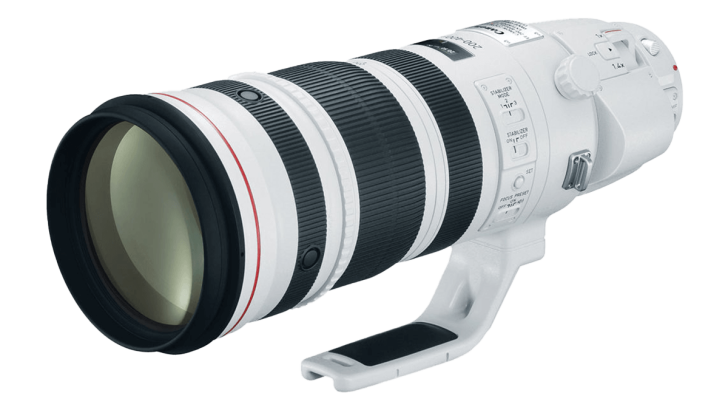Canon continues to wind down the production of the EF lens line up, this time the EF 200-400mm f/4L IS USM 1.4x has received the axe. There are only a couple of other EF super telephoto lenses still listed as current products.
Various subsidiaries around the globe have stopped importing EF lenses, most notably Canon Australia.
We expect all EF lenses to wind down by the end of 2024. Though there should still be inventory of EF lenses for quite a while. There is also no need to worry about servicing EF lenses, that should go on for at least a decade.
Canon will soon announce the RF 200-500mm f/4L IS USM, likely by the end of 2023. How many they’ll be able to produce will be the big question, as we’ve seen production issues with the RF 100-300mm f/2.8L IS USM.
We have been told numerous times that the EF 200-400mm f/4L IS USM 1.4x RF replacement won’t be equipped with a built-in teleconverter, which has ruffled a few feathers. However, we personally feel that most photographers will be happier with a 500mm f/4 long end over a 560 f/5.6. Throw in the obvious weight reduction and better balance from a completely new optical design, and Canon will have a winner for the shooters that need such a lens.
|
When you purchase through links on our site, we may earn an affiliate commission. Here's how it works. |


It's no longer on the standard order sheets for two major retailers, it's done. Official discontinuation always happens later.
This again?
Fine.
Canon is (dooooooooooooooooooooooooooooooooooomed)^3
There's missing lenses in the lineup for sure, but niether Sony or Nikon make better lenses. Nikon has even been going the rebranding route.
I think Canon is wise to consolidate two EF lens into one RF lens, the mighty EF 500mm f4 L IS II prime (which curiously never got a mk III version) and the 200-400mm f4 L IS. The only problem that this will could have it's it's weight. The mkII prime is a great ratio between focal length, aperture and weight. It's very popular as the easily transprtable great white.
I wonder if Canon will continue with the RF 400mm, 600mm, 800mm primes or consolidate into zooms or internal active teleconverters. A 400 f2.8 / 600 f4 / 800 f5.6 makes a lot of sense, utilising a native prime, 1.5x and 2x active TC.
The 28-70/2 is certainly innovative. The 5.2mm VR is innovative, albeit for a niche market. Most of the RF L-series lenses are modest improvements on already excellent lenses. An extra 1-2mm on the wide end of UWA zooms. IS added to the 24-70/2.8 (where IBIS is present on most bodies). 70-200 zooms with extending designs and materials making them smaller and lighter. 25% more focal length on the 100-500, but the same physical aperture as its 100-400 predecessor.
Personally, I think the most significant RF lens innovations are in the consumer range, particularly in designs that can keep the costs of those lenses low. The 600/11 and 800/11 are innovative, as are the RF 100-400, 15-30, and 16/2.8...in all cases bringing those focal lengths for FF bodies well down into the affordable range while maintaining really good IQ.
I am surely not interested in the price, knowing that it is far from any budget justifiable for me ;)
OTOH...
... this sounds very much like trolling, because the highlighted argumentation seem pretty much false, as others like @Canon Rumors Guy already did prove the opposite.
And if you think Sony and Nikon do better, feel free to vote with your purse.
Actual overall sales numbers seem to tell, that others have a different opinion.
The 100-300, 28-70, or the F11 lenses are pretty innovative but the 1200 is just an EF 600 F4 with permanently added 2x TC with RF mount. The RF 600 F4 and 400mm 2.8 lenses are really just the latest EF versions with an updated mount and tweaked AF mechanism but exactly the same "old" optics. This is not a bad thing because the EF lenses are still great and relatively new, but I would not call them innovative.
The Nikon 600 + 1.4TC, 400 2.8 + 1.4 TC, or 800mm 6.3 are much more innovative, for example. Or even the new Canon 28mm pancake with the crazy aspherical molded lenses.
...no doubt in my mind that moves in the direction of light-and-small are the future (the present?!) for even high-end photo gear.